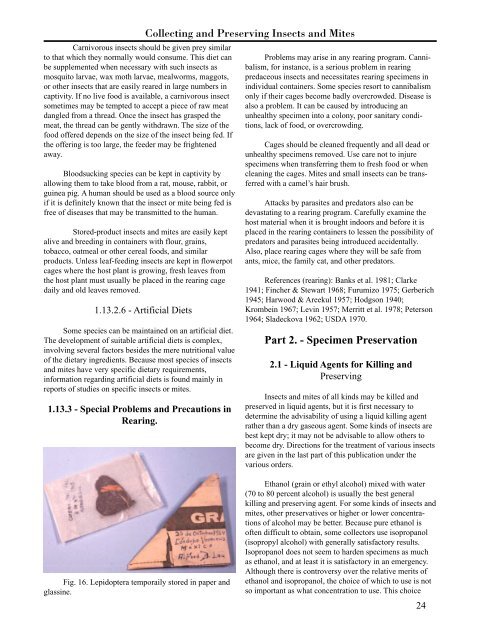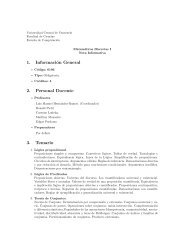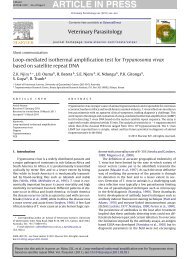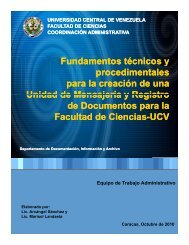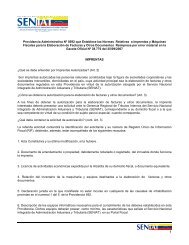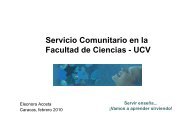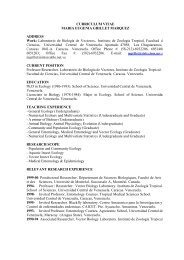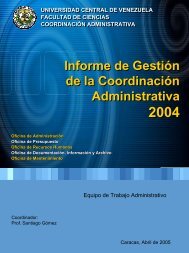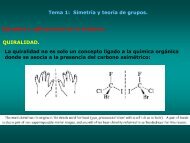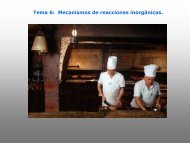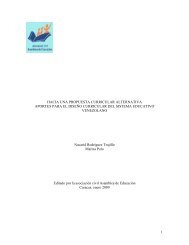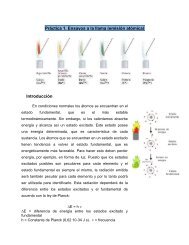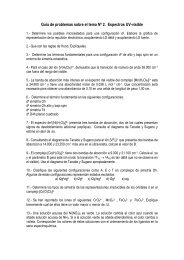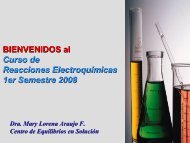Collecting and Preserving
Collecting and Preserving
Collecting and Preserving
- No tags were found...
You also want an ePaper? Increase the reach of your titles
YUMPU automatically turns print PDFs into web optimized ePapers that Google loves.
Carnivorous insects should be given prey similarto that which they normally would consume. This diet canbe supplemented when necessary with such insects asmosquito larvae, wax moth larvae, mealworms, maggots,or other insects that are easily reared in large numbers incaptivity. If no live food is available, a carnivorous insectsometimes may be tempted to accept a piece of raw meatdangled from a thread. Once the insect has grasped themeat, the thread can be gently withdrawn. The size of thefood offered depends on the size of the insect being fed. Ifthe offering is too large, the feeder may be frightenedaway.Bloodsucking species can be kept in captivity byallowing them to take blood from a rat, mouse, rabbit, orguinea pig. A human should be used as a blood source onlyif it is definitely known that the insect or mite being fed isfree of diseases that may be transmitted to the human.Stored-product insects <strong>and</strong> mites are easily keptalive <strong>and</strong> breeding in containers with flour, grains,tobacco, oatmeal or other cereal foods, <strong>and</strong> similarproducts. Unless leaf-feeding insects are kept in flowerpotcages where the host plant is growing, fresh leaves fromthe host plant must usually be placed in the rearing cagedaily <strong>and</strong> old leaves removed.1.13.2.6 - Artificial DietsSome species can be maintained on an artificial diet.The development of suitable artificial diets is complex,involving several factors besides the mere nutritional valueof the dietary ingredients. Because most species of insects<strong>and</strong> mites have very specific dietary requirements,information regarding artificial diets is found mainly inreports of studies on specific insects or mites.1.13.3 - Special Problems <strong>and</strong> Precautions inRearing.<strong>Collecting</strong> <strong>and</strong> <strong>Preserving</strong> Insects <strong>and</strong> MitesProblems may arise in any rearing program. Cannibalism,for instance, is a serious problem in rearingpredaceous insects <strong>and</strong> necessitates rearing specimens inindividual containers. Some species resort to cannibalismonly if their cages become badly overcrowded. Disease isalso a problem. It can be caused by introducing anunhealthy specimen into a colony, poor sanitary conditions,lack of food, or overcrowding.Cages should be cleaned frequently <strong>and</strong> all dead orunhealthy specimens removed. Use care not to injurespecimens when transferring them to fresh food or whencleaning the cages. Mites <strong>and</strong> small insects can be transferredwith a camel’s hair brush.Attacks by parasites <strong>and</strong> predators also can bedevastating to a rearing program. Carefully examine thehost material when it is brought indoors <strong>and</strong> before it isplaced in the rearing containers to lessen the possibility ofpredators <strong>and</strong> parasites being introduced accidentally.Also, place rearing cages where they will be safe fromants, mice, the family cat, <strong>and</strong> other predators.References (rearing): Banks et al. 1981; Clarke1941; Fincher & Stewart 1968; Furumizo 1975; Gerberich1945; Harwood & Areekul 1957; Hodgson 1940;Krombein 1967; Levin 1957; Merritt et al. 1978; Peterson1964; Sladeckova 1962; USDA 1970.Part 2. - Specimen Preservation2.1 - Liquid Agents for Killing <strong>and</strong><strong>Preserving</strong>Insects <strong>and</strong> mites of all kinds may be killed <strong>and</strong>preserved in liquid agents, but it is first necessary todetermine the advisability of using a liquid killing agentrather than a dry gaseous agent. Some kinds of insects arebest kept dry; it may not be advisable to allow others tobecome dry. Directions for the treatment of various insectsare given in the last part of this publication under thevarious orders.Fig. 16. Lepidoptera temporaily stored in paper <strong>and</strong>glassine.Ethanol (grain or ethyl alcohol) mixed with water(70 to 80 percent alcohol) is usually the best generalkilling <strong>and</strong> preserving agent. For some kinds of insects <strong>and</strong>mites, other preservatives or higher or lower concentrationsof alcohol may be better. Because pure ethanol isoften difficult to obtain, some collectors use isopropanol(isopropyl alcohol) with generally satisfactory results.Isopropanol does not seem to harden specimens as muchas ethanol, <strong>and</strong> at least it is satisfactory in an emergency.Although there is controversy over the relative merits ofethanol <strong>and</strong> isopropanol, the choice of which to use is notso important as what concentration to use. This choice24


